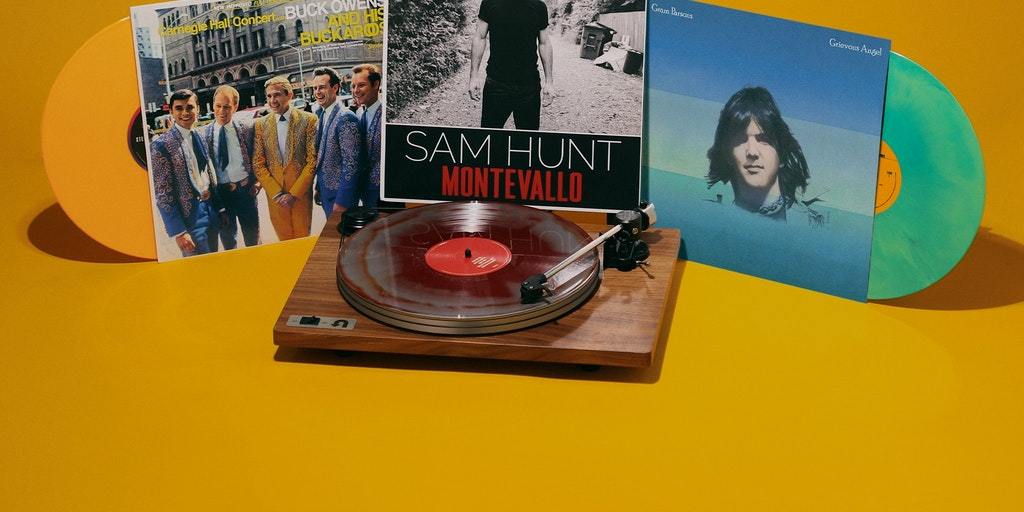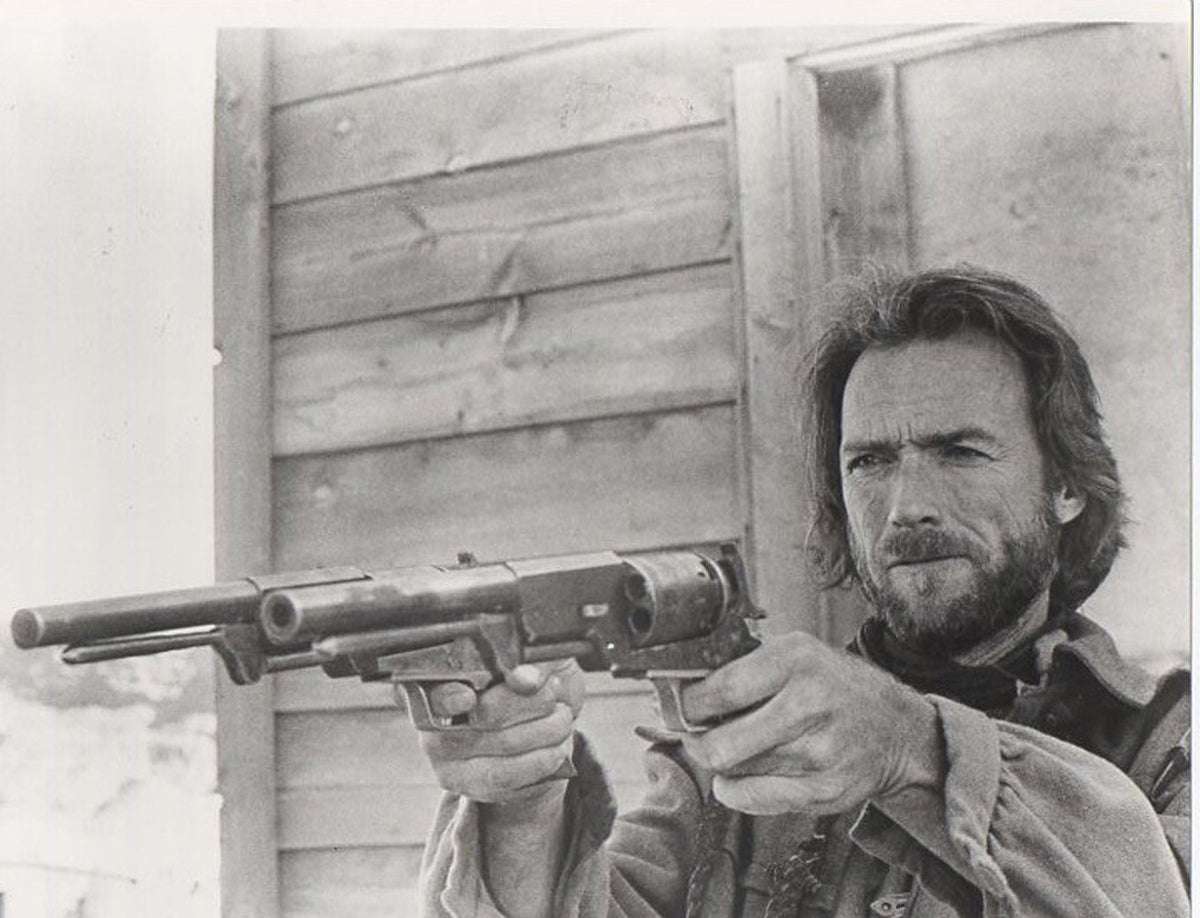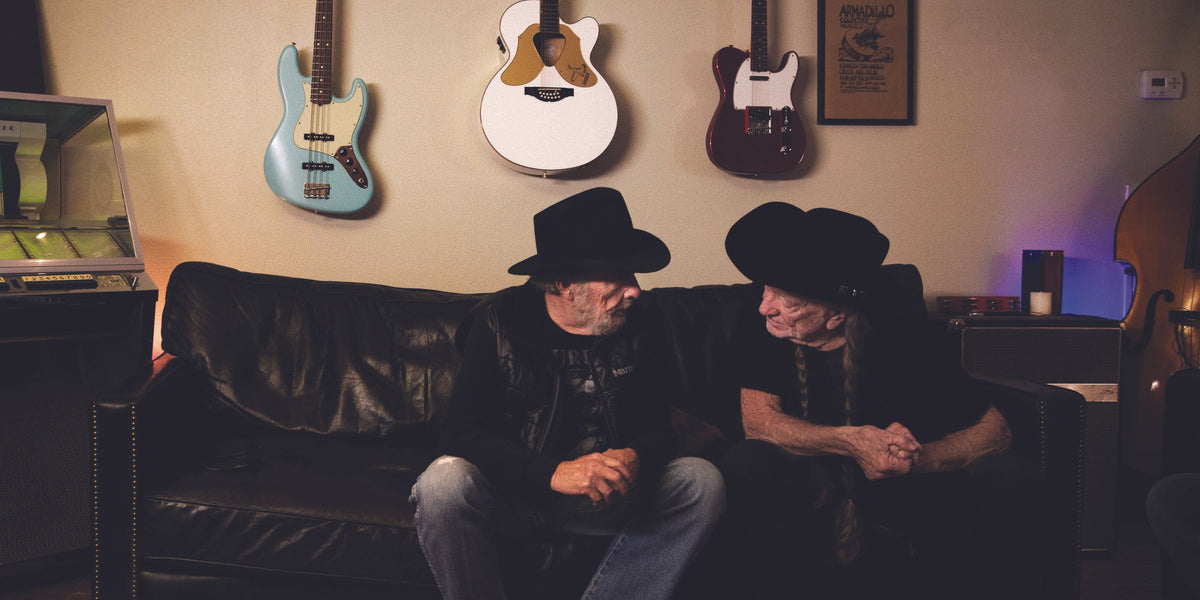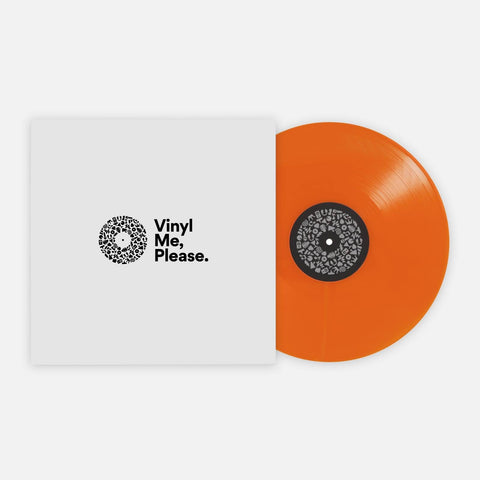Buck Owens and His Buckaroos’ Carnegie Hall Coup
The country band’s historic live set proved there was a worldwide audience for the genre
“I’ve never had a show — before or since — that went as seamlessly as that one at Carnegie Hall. And even though New York City isn’t exactly known for having much of a country fan base, the crowd that night was as receptive as any I’d ever experienced. I still wouldn’t live there if they gave me the whole damn town, but that night sure changed my mind about not wanting to play there.” — Buck Owens in Buck ’Em! The Autobiography of Buck Owens
“If I can make it there, I can make it anywhere.” — Frank Sinatra, “New York, New York”
In the 130 years since steel magnate Andrew Carnegie staked his claim for a block of Seventh Avenue to house the symphony he was a patron of and built Carnegie Hall, the Midtown Manhattan venue has served as a proxy for the American Entertainment Audience, the place where our beloved entertainers are enshrined and celebrated. It was, before Radio City Music Hall — being that the radio was invented five years after Carnegie Hall opened — the measuring stick for our great performers, the performance venue in the American Mecca, the place you’d prove that you’d made it anywhere by making it there. “How do you get to Carnegie Hall?” a wise proverb once asked. “Practice” was the one-word answer. It’s the place every performer wants to play, eventually; telling your mom you’re playing Carnegie Hall is much cooler than telling her you’re playing the band shell in Des Moines.
In the first 75 years of Carnegie Hall being in operation, country music was an intermittent guest in the hallowed hall. It regularly hosted Gershwin and Ellington, but country performers were few and far between. Various country stars played package shows at Carnegie Hall — Patsy Cline, Marty Robbins, Faron Young and Johnny Cash, among others — meant to promote the Grand Ole Opry and the Ryman in Nashville. Despite performances from jazz, folk and classical musicians being turned into albums from Carnegie Hall at a fairly regular clip, between 1891 and 1965, there was only one country adjacent album recorded and released from Carnegie Hall: Flatt and Scruggs’ 1963 album, Flatt and Scruggs at Carnegie Hall, which commemorated the Foggy Mountain Boys’ groundbreaking performance as the first-ever bluegrass band to headline the venue.
In March 1966, however, a country band from Bakersfield, California, took to Carnegie Hall’s stages at the peak of their powers, as only the second country band after Flatt and Scruggs to headline a show there, and ultimately released — outside of At Folsom Prison (VMP Country No. 1) — the most important live country album ever. An album that proved many things between its two sides: that country music was bigger and less provincial than many industry folks would have you believe, that it had an audience around the world already, and that the artist behind the album’s gamble on himself and his sound proved that you didn’t need to go to Nashville and sell out to sell big.
With Carnegie Hall Concert, Buck Owens and His Buckaroos entered the pantheon of country music, becoming part of its very fiber, and altered the way it was considered in big cities and at record labels. The Buckaroos proved after making it everywhere else, that they could also make it in New York, the first — but definitely not the last — country artist who would take on the five boroughs and become a superstar.
“I always wanted to sound like a locomotive coming straight through the front room.” — Buck Owens
If Buck Owens didn’t become a country star, his early life might have ended up as the subject of a country song. Born Alvis Edgar Owens Jr. in 1929, 10-ish weeks before the historic stock market crash of that year, Owens grew up the son of dirt-poor sharecroppers in north Texas. At age four, he walked into his parents’ house and declared that his new name was “Buck,” since that was also the name of his favorite animal on the farm, the family donkey. After an early childhood spent in the Dust Bowl, Owens’ family decided to light out for California, like so many people did in those years. Unlike the other Okies and Texans, however, the Owens family suffered a car breakdown before they could make it as far west as Okie landing spots like Bakersfield; they settled instead in Mesa, Arizona.
It was there that Buck acquired his taste for music; he taught himself to sing, play the mandolin and guitar, and even became proficient in the piano and the drums as well. In ninth grade, he dropped out of school to pursue music and provide his share to his family, who still hadn’t had much improvement to their lot. By the mid-’40s, he was a regular radio DJ and had gigs around Arizona playing as part of an acoustic country trio.
In 1951, at 22, Owens finished the journey his family started 15 years earlier and moved to Bakersfield, California. It was there that the vaunted “Bakersfield Sound” would begin to take shape; Okie honky tonk collided with country and electricity for a whole new way to make country music. That wouldn’t calcify until later in the Eisenhower years, but Buck started making his way up the country music ranks while in Bakersfield: He’d routinely drive the two hours south to LA to record at sessions for the nascent country music wing of Capitol Records, appearing on sessions for Tennessee Ernie Ford and Wanda Jackson, among others.
In the mid-1950s, Owens and his family moved to Washington state for a variety of odd jobs and band gigs, which is where Owens met the kid who’d ultimately help him redefine the rules of country music and be, as he often called him, his “right arm”: Donald Ulrich, forever known in country music lore as Don Rich, Owens’ musical muse. Owens saw Rich play the fiddle in a club in Tacoma and immediately poached him for his own band. They clicked immediately; Rich’s voice perfectly meshed with Owens’ on harmonies, and Owens’ nimble guitar lines were a perfect fit for Rich’s dexterity on the fiddle. One problem: Rich’s mom wanted him to become a music teacher, so he left the Buckaroos when Owens headed back to Bakersfield in 1959, after a single he had made with Rich, “Under Your Spell Again,” hit No. 4 on the country charts. By the end of 1960, Rich was back with Owens, had switched to guitar, and helped Owens continue his climb up the country music ladder.
For anyone thinking that you have to “make it” before you’re 30, let Buck Owens’ career serve as a reminder that perseverance can pay off in the end: After more than 15 years as a professional musician in the early ’60s, Owens still hadn’t made it; he had a few popular singles, had toured with Johnny Cash, but was still a small-time artist looking for an identity and a sound. The former would come when a temporary Buck Owens bassist and Bakersfield ne’er-do-well named Merle Haggard gave Owens’ band a name: The Buckaroos.
The latter would come over the course of 1962 and, finally, in 1963, when Owens had his first No. 1 hit, the irrepressible “Act Naturally.” If you read or watch documentaries about Owens and the Buckaroos’ music, one of the first things anyone mentions — and that someone is often Dwight Yoakam — is how great the Buckaroos’ music sounded coming out of a radio. Eschewing the heavy, saccharine strings, backing choruses and countrypolitan sounds Nashville was pushing on artists throughout the ’60s in an attempt to make the music “mainstream,” Owens often recorded without a bassist or with the bass much lower in the mix than other country acts in order for his voice, the riffs and the songs to literally punch out of a speaker: There was no chance the low-end would muffle any of those things because there often was no low-end. Owens took this obsession with wanting to sound incredible out of a speaker to a degree no one else did: He’d often test mastering and mixing jobs on his singles with a set of car speakers he had disassembled and put into the studio.
Because his sound so quickly became part of the DNA strand of country music writ large, it’s hard to hear how radical “Act Naturally” was at the time it was released, but it was outlaw country before Willie Nelson even had a recording contract, alt-country before alt-country, punk rock before there was even rock radio to rebel against. It stripped back everything superfluous, and put the emphasis on Owens and Rich’s harmonies, the interplay of their acoustic guitar and Fender Telecaster, and had what in those days was a mind-bending guitar solo from Rich. Owens was also notorious for being one of few country artists in the ’60s who actually recorded with his road band; there were no studio wizards standing in for the Buckaroos on tape. And it can’t be overstated how much of an impact Don Rich’s unique style — he took the complicated fingering style from fiddle and transposed it onto his trusty Telecaster — had on not only the Buckaroos’ sound but country music as a genre. The Bakersfield Sound was born, formally, with “Act Naturally,” and with it, an entire new system for making country music. Owens proved first — which various acts would have to prove over and over again themselves — that you didn’t need to be part of the Nashville machine to make a go at country stardom; make good music long enough and the audience will follow you, even if your music doesn’t sound like what Nashville is selling as “real” country music that year.
The 1960s in country music, from the time “Act Naturally” dropped to at least until Johnny Cash strode into Folsom Prison, became Buck Owens’; he had 18 of the No.1 singles of the decade, including a whopping 16 in a row at one point. He became the only country artist who could have a demonstrable impact on both the genre’s next few waves — Willie moving to Austin to get out of the Nashville system and make his own sound owes homage to Buck, Waylon played a Telecaster because Don Rich did, Merle literally played in Buck’s band and married his ex-wife, and Dwight Yoakam brought back the Bakersfield Sound in the ’80s — and the Beatles, who, during their absolute peak, covered “Act Naturally” on Help! and put it as the B-side to their immortal “Yesterday.” Again, for those in the back: Buck Owens was so huge in the ’60s that the biggest pop act in the history of music covered him.
Between 1963 and 1966, Owens was minted as a country superstar, but it was still considered a huge risk by Capitol Records to book him at Carnegie Hall. As Owens jokes in his posthumous autobiography Buck ’Em, the radio DJ that introduces them on Carnegie Hall Concert came from New Jersey, because that was the closest country radio station his label could likely find (while WJRZ was based in Jersey, it changed its format in the early ’60s to be the first country music station firmly aimed at New York City). In those days, it was hard to tell if country music had much impact on a metropolis like New York City; Owens could reasonably expect to pack the Ryman, or any other venue below the Mason-Dixon, but would people pay to see him and the Buckaroos in a city like New York? Owens agreed to the dates at Carnegie Hall, but with the caveat that he could cancel if ticket sales were soft. His label countered with turning the show into an album even if the sales were slow, which didn’t turn out to be the case anyway: It sold out weeks in advance. And thus, Carnegie Hall Concert was born.
A thing to remember when you drop the needle on Carnegie Hall Concert today: This was recorded before overdubs were widely used, before hardly anyone in country music even tried to use them. What’s more: This album comes from one set, on one night. There was no picking the best takes from different dates here: The Buckaroos played one night only at Carnegie Hall, which means that they had to get everything right in one take. No mistakes, no crowd noise sweetening; everything that happens between these two sides is an aural document of what happened on Seventh Avenue on March 25th, 1966.
And what happened is nothing short of revelatory.
Any lingering doubts Owens had about his ability to enrapture a crowd of New Yorkers had to be gone 70 seconds into the Buckaroos’ performance, when, after an intro from WJRZ DJ Lee Arnold, the band kicked into “Act Naturally,” and the crowd came unglued so loud that Owens had to lengthen the song’s opening line in order to hear himself and his band. Apart from the crowd, the other highlight of this take is listening to the lilting guitar lines of Rich as he plays the biggest show of his life up to that point. For that matter, all of the Buckaroos — Owens, Rich, bassist Doyle Holly, pedal steel player Tom Brumley and drummer Willie Cantu, who was all of 19 years old at the time — are in top form on Carnegie Hall Concert, a well-oiled machine sounding like the Cadillac Owens liked to test his songs out on.
“Act Naturally” is followed by two more recent hits: “Together Again” and “Love’s Gonna Live Here,” the former having a mournful and flawless solo from Brumley, and the latter serving as a showcase for how fluidly Owens and Rich’s voices could form a third voice of clear mourning and yearning. Carnegie Hall Concert’s setlist is heavy on the hits, as Owens clearly saw the show as a moment for a coronation: eight No. 1 singles were performed across the performance in medleys and as standalones, including an especially perfect take of “Waitin’ in Your Welfare Line,” a single just then climbing the charts on its way to No. 1. Buck’s strength was up-tempo songs like “I’ve Got a Tiger by the Tail” (also performed here) and “Act Naturally,” but when he slowed the Buckaroos’ railroad car down a step, it created so much space for him to stretch his vocal lines, which he put to great use on the pleading and hiccuping “Welfare Line.”
The Buckaroos end their whirlwind set with a medley of Owens’ first four top-five singles — winkingly, in the order that they were released — along with a pair of covers Owens did early in his career. It was a way of tying a bow on the evening’s kingmaking moment: Owens came to New York with the Buckaroos to show they were the reigning kings of country, but he acknowledged all the work it took to get there in the final medley. “It takes people like you to make people like me,” Owens told the crowd as he left the stage, them rapturously applauding as loud as they were at the beginning of the night.
For the album’s cover, Capitol used a picture of Owens and the Buckaroos taken in their trademark Nathan Turk suits in front of Carnegie Hall the afternoon before the show. Immediately after the Carnegie Hall date, the Buckaroos went up and down the East Coast, never pausing to celebrate the triumph of representing country music writ large in New York City. All that mattered then was that the album was perfect: “Not one of us had hit a wrong note, missed a beat, or flubbed a single word,” Owens would say later. “We’d literally recorded a perfect album in less than fifty minutes.” Carnegie Hall Concert was registered with the Library of Congress’ National Recording Registry in 2013, citing its historic importance to country music.
Carnegie Hall Concert was released — sans most of its crowd work and some medleys — a few months after it was recorded. It almost immediately shot up to the No. 1 spot on Billboard’s Country charts, one of an inconceivable 12 albums he’d eventually top the charts with between late 1963 and early 1968 (a new No. 1 Buck Owens album came out every 126 days on average in that span). It was so successful that Capitol recorded a Buckaroos tour of Japan for Live in Japan, another chart-topping Buck Owens live album. In 1969, right around the time upstarts like Willie Nelson, Waylon Jennings and Merle Haggard and old companions like Johnny Cash started challenging for Buck’s throne as the king of country music, he pivoted to television, starring as the co-host of Hee-Haw, a show that ran for a staggering 17 years, and beamed Owens and his cornpone humor into every home across America. His pivot to television and the occasional studio album and tour also dovetailed with him losing his right arm, Don Rich, who died in a tragic motorcycle accident in 1974.
For better or worse, most of the listening public remembers Owens from his time as a down-home joker and sometimes singer on Hee-Haw, but let this edition of Carnegie Hall Concert serve as a reminder: In 1966, there was no country band tighter, better or more representative of the spirit of country than Buck Owens and His Buckaroos.
Andrew Winistorfer is Senior Director of Music and Editorial at Vinyl Me, Please, and a writer and editor of their books, 100 Albums You Need in Your Collection and The Best Record Stores in the United States. He’s written Listening Notes for more than 30 VMP releases, co-produced multiple VMP Anthologies, and executive produced the VMP Anthologies The Story of Vanguard, The Story of Willie Nelson, Miles Davis: The Electric Years and The Story of Waylon Jennings. He lives in Saint Paul, Minnesota.
Related Articles
Join the Club!
Join Now, Starting at $36Pages







